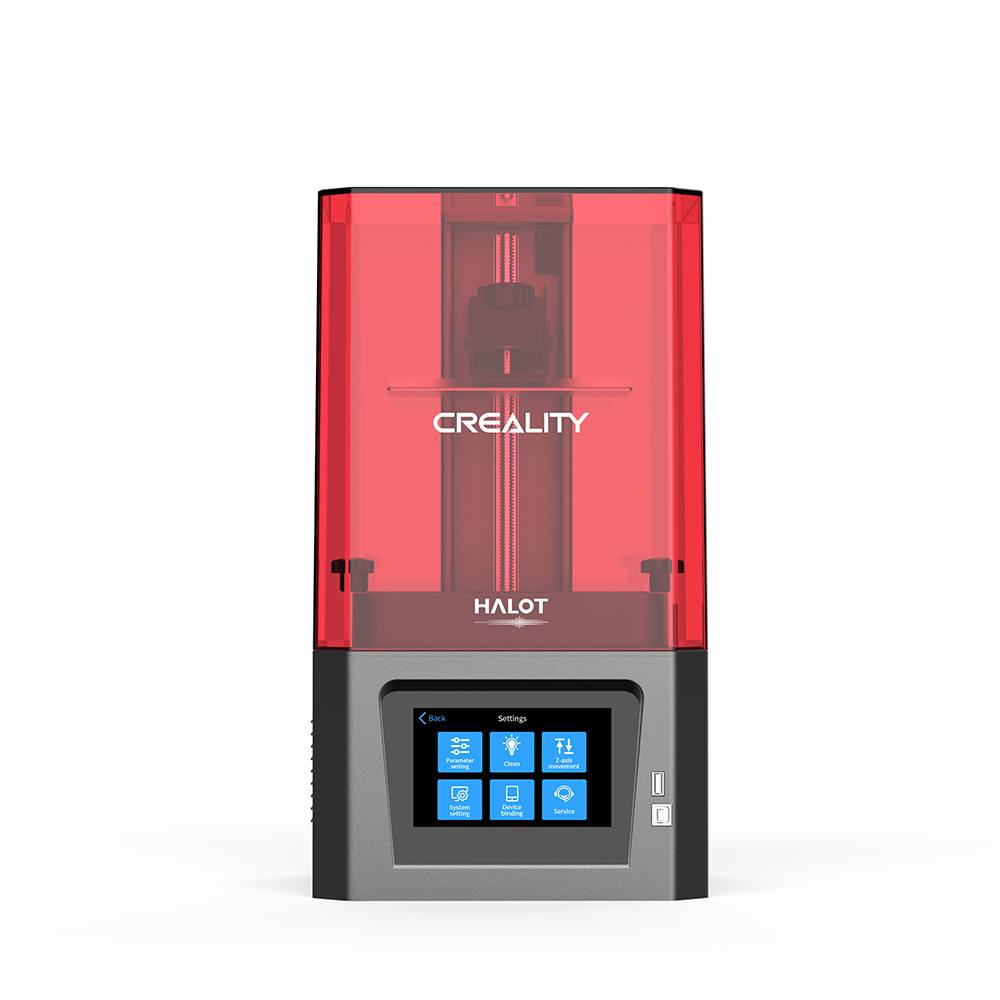Compare Halot One vs K1 Max
Comparison between the best 3D printers
Choose the best 3D printer at the best price. The cheapest 3D printers are here.
Buy a 3D printer here with 3D Fila.
 |
 |
|
| Model | Halot One |
K1 Max[BUY K1 Max] |
| Printing Material | Resin | Filament |
| Buy Resin for Creality 3D Halot One | Buy Filament forCreality 3D K1 Max | |
| Estimated price | $250,00 | $1300,00 |
| Manufacturer | Creality 3D | Creality 3D |
| Release Year | 2021 | 2023 |
| Print Volume [mm] | 127x80x160 | 300x300x300 |
| Printer Size [mm] | 221x221x404 | 435x462x526 |
| Weight [kg] | 7,1 | 18 |
| Power Loss Recovery | NO | YES |
| Maximum Resolution [mm] | 2k | 0,1 |
| Processor | ||
| Display | Display touchscreen 4,3'' | |
| Power Supply | ||
| Connectivity | USB / Wi-Fi / Ethernet | |
| Operating systems | Windows, Mac, Linux | Windows, Mac, Linux |
| Date of registration in the system | 2022-10-11 | 2023-12-01 |
| Release date | 2021 | 2023 |
| Extra features | Crealitys Halot-One printer stands out with several innovative features. It has a high-resolution touchscreen, providing an intuitive and responsive interface. Its quiet printing capability is remarkable, ideal for environments where noise is a concern. Assembly and setup are simple, with automatic functions facilitating quick start. Among its features, remote monitoring and adjustments via the Creality Cloud app stand out, simplifying remote print management. Replacing the FEP in the resin vat is easy, and the printer even includes extra FEP sheets. Top cover removal detection increases safety by automatically pausing printing. In addition, its integral light source promises high uniformity, optimizing print quality. | The Creality K1 Max stands out as a fast Core XY 3D printer with a large build volume of 300 x 300 x 300 mm. It is fully enclosed and equipped with AI sensors to prevent print failures. This model has a smooth and flexible PEI build platform, and uses an automatic leveling system with LIDAR, as well as a filament run-out sensor. LAN, Creality Cloud and USB Flash Disk connectivity are available, as well as a 4.3-inch touchscreen interface. The K1 Max is robust, weighing in at 18 kg, and includes an AI camera and limited version of the Klipper firmware. Its motion system is solid and the printer is efficient with high-temperature filaments, but it is not silent. Assembly is 99% complete, requiring only minor adjustments before use. |
| Support for multiple colors and materials (AMS and CFS) | NO | NO |
Notes * |
||
| Cost-benefit | 8 / 10 | 7 / 10 |
| Hardware | 0.6 / 10 | 4.8 / 10 |
| Tela | . | . |
| Print volume | 3 / 10 | 4 / 10 |
| Performance | 9 / 10 | 5 / 10 |
| [BUY K1 Max] |
Conclusion |
| When comparing the two 3D printers, several key factors come into play. Both printers have their unique strengths and weaknesses, catering to different user needs and preferences. **Build Quality and Reliability**: The first printer is often praised for its robust build quality and reliability, making it suitable for consistent, long-term use. In contrast, the second printer may exhibit some variability in build quality, potentially affecting the consistency of prints. **Print Quality and Resolution**: The first option generally offers superior print quality with finer detail and better surface finish, which can be critical for professional applications. The second printer, while capable, may not reach the same level of precision, making it more suitable for hobbyists or less demanding projects. **Ease of Use and Setup**: The first printer may require more setup time and experience to optimize, while the second printer is often recognized for its user-friendly interface and straightforward setup process, appealing to beginners. **Material Compatibility**: The first printer usually supports a wider variety of materials, including advanced filaments, enhancing versatility in projects. The second printer is limited in this regard but can still handle standard filaments well, which is adequate for many users. **Price to Performance Ratio**: While the first printer offers exceptional performance and features, it comes at a higher price point. The second printer is more budget-friendly, making it a compelling option for users with cost constraints or those just getting started in 3D printing. In summary, the choice between these two 3D printers largely depends on the user's specific needs. For professional-grade quality, feature versatility, and long-term reliability, the first printer stands out as the better option. Conversely, for newcomers to 3D printing or those seeking an economical solution for simpler projects, the second printer presents an attractive alternative. |

